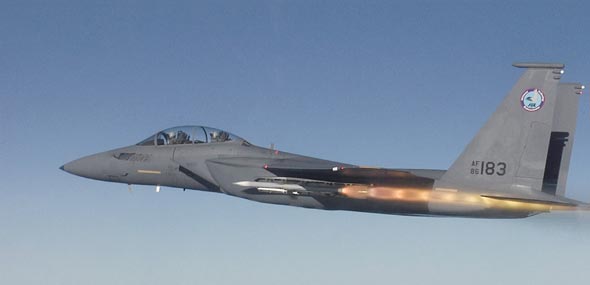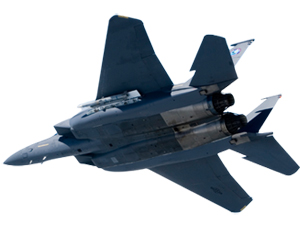
The South Korean defense acquisition program administration (DAPA) has indicated this week that the bidding process for the 8.3 trillion won (US$7.2 billion) program buying 60 new fighter aircraft has finally got to a conclusion. A single finalist, likely to be the Boeing Company remained in the race. With a single option now on the table offered at the right price, DAPA is expected to conduct further assessment and announce its final decision in mid-September. Boeing said it was still waiting to hear the outcome of the competition. Lockheed Martin also said it has not received an official notification from the Republic of Korea regarding the results of the price bidding for the F-X Program. Company officials said the decision is not determined on cost alone, and aircraft capabilities will also be considered in the month long evaluation process that will now proceed. “The F-X source selection process has multiple phases and we will continue to work closely with the U.S. government as they offer the F-35 to Korea,” Reuters quoted Lockheed Martin sources comment. The United States has proposed the fighter planes to Seoul under a government-to-government basis, through the ‘foreign military sales’ channel, with companies providing information on price and other details.
Seoul initially planned to pick a bidder by October 2012, with the goal of receiving the first delivery in December 2016. However, due to the extended process it is likely that the first batch of fighters will be shipped in August 2017. These new fighters will replace the remaining airplanes of a fleet of some 150 F-4Es and F-5E/Fs the Republic of Korea Air Force (RoKAF) has been operating for five decades. These aircraft are nearing the end of their operational lives and will have to be withdrawn from service around 2015.
Earlier it was reported that the European Aeronautic Defense and Space Company (EADS) has been eliminated from the selection, after ‘abruptly changing its contractual terms’. EADS submitted an offer for 54 single seater and six twin-seat Eurofighter Tranche 3 fighters, while DAPA required 15 twin-seat and 45 single seat planes. South Korea’s decision to eliminate EADS and the fact that the costlier F-35A is available only in a single-seat version has left left Boeing’s F-15 Silent Eagle as the sole final candidate, government sources said Sunday.
Lockheed Martin was also one of three bidders, offering the F-35 which is available only in a single seat variant. In addition to the lack of twin-seat configuration, the F-35A was said to be costlier than the F-15SE or Typhoon Tranch 3. Throughout the bidding process Seoul insisted not to exceed its target cost, thus repeating bidding sessions 55 times.
[nonmember]Additional section reserved for members[/nonmember][ismember]Over the past decade Boeing has delivered 60 F-15Ks ‘Slam eagle’ strike fighters to Seoul since 2002. The current variant represents the latest evolution of the F-15 Eagle, employing an AESA radar, latest generation avionics and Large Area Display (LAD) based cockpit design and reconfigured conformal fuel tanks that include internal weapon’s bays carrying missiles and air/ground weapons, reducing the aircraft radar cross-section signature (RCS) to near-stealth level. It doesn’t offer the same radar signature reduction as an F-35 and is only optimized for air-to-air combat stealth. What it does offer is greatly improved radar stealth over the F-15K and internal weapons.
Throughout the bidding process Boeing stressed the benefits Seoul will gain from the interoperability and existing production base, supporting the F-15SE with the F-15K models purchased in the first two stages of its fighter modernization programs. The Royal Saudi Air Force (RSAF) has also selected this F-15SE configuration for its fighter modernization plan.
Boeing has already established a significant industrial partnership with Korean companies supporting the F-15K program, where Korea was responsible for 40% of production and 25% of assembly. Such cooperation is expected to be continued or widened under the follow-on production run. For example, for the F-15K, the fuselage and wings were supplied by Korea Aerospace Industries. In November 2010, Boeing signed an agreement with Korea Aerospace Industries for KAI to design, develop and manufacture the conformal weapons bay for the F-15SE. KAI has previously produced wings and forward fuselages for the F-15SG and could therefore benefit from the sales of new F-15s to Saudi Arabia.
Another local supplier to benefit from the selection of F-15SE is Samsung Techwin, locally producing the F100-229 afterburning turbofans under license. These engines are common with the the RoKAF F-15K and KF-16 fleet. Raytheon will provide the APG-82 AESA radar, the previous model used the Raytheon APG-63(V)1, locally produced by LIG Nex1. Electronic warfare suite (EW jammer and Radar Warning Receiver (RWR) were supplied by Samsung Thales.
For the F-15K LIG Nex1 was also responsible for some of the cockpit displays in the F-15K. The new variant will use new systems developed for Boeing fighter aircraft by Elbit Systems. These systems rely on modern Large Area Display (LAD) and new-generation helmet mounted sighting and display system. In May 2013 Elbit Systems announced the establishment of a local joint venture called Sharp Elbit Systems Aerospace, Inc. (SESA). According to the founders, the new company will be the third company specializing in aviation electronic component manufacturing, aiming to become the third largest avionic system provider in South Korea, following LIG Nex1 and Samsung Thales.[/ismember]

















